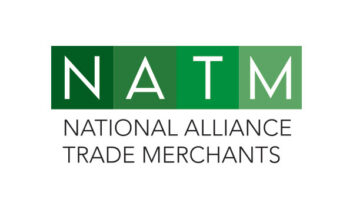Once upon a time, independent dealers depended on analog TVs to deliver fat margins to their bottom lines.
Then, beginning in the mid-1990s, price compression sucked the profits out of the 19-inch and 25-inch categories, and dealers beat a hasty path out of the brown goods business.
Today, with the advent of digital and high-definition TVs, and all manner of flat-panel displays with which to watch them, video has recaptured its lost panache and hefty payday. Yet dealers who’ve since found sanctuary in high-end majaps, furniture or even home remodeling are reluctant to revisit their CE roots, much to the dismay of their buying group management.
As group leaders see it, the digital revolution is tailor-made for small independents, whose sales and support teams have the time and training to properly sell and install complex categories. And the points on these products, they argue, are nothing to sneeze at.
Bob Lawrence, executive director of Brand Source/Associated Volume Buyers, understands members’ reasons for leaving CE, but insists that that was then and this is now.
“Guys were getting out of CE three, four years ago when the 19-inch and 25-inch categories lost all their margins,” he recalled. “It was easier to get out then. But we say, ‘Leave that alone, there’s lots of new stuff and it’s time to reevaluate the category.’ “
To encourage members to retest the CE waters, Brand Source has published a comprehensive turnkey guide to the category. The 36-page booklet includes advertising, merchandising and marketing tips, ideas for in-store displays, primers on DTV and home theater, pricing guides, and suggested plan-a-grams for categories ranging from VCRs and 13-inch TVs to DVD players and HDTVs.
Explained Jim Ristow, the group’s general manager/electronics, “If we give members a plan that they don’t have to think too much about, it’s easy to get back into the business. We’re showing them which categories have the margins.”
As Ed Kelly, director of Nationwide TV & Appliances, the country’s largest buying group, told TWICE in August, “CE is the side where we’re most challenged but have the greatest opportunity. We’ve stressed to members that they had better get their butts back into CE over the next 18 months if they want to keep up with the digital revolution.”
Why the urgency? “Dealers have an opportunity to increase their businesses by 25 to 30 percent if they go after digital,” claimed Kelly. “But they need a plan, and we’ve been pushing that very, very hard.”
To help ease their transition back into brown goods, which comprise only 30 percent of group sales, Nationwide recently struck a direct distribution deal with Philips that will also give members more advertising support and a greater say in product development and marketing. The partnership follows similar pacts with several other CE suppliers, Kelly said.
But Warren Mann, executive director of the MARTA Cooperative of America, says the situation is almost reversed among his flock, which is up single digits in white goods and double digits in its core JVC, Thomson and Toshiba CE businesses.
“I think I have to push my guys to sell appliances,” he joked, adding that in the absence of Ward’s and Heilig-Meyers, “Any independent dealer who isn’t up in their market in brown goods is getting snaked by another independent.”
Yet many dealers continue to disdain electronics. Bob Lower of Lower’s TV & Appliance in New Cumberland, Pa. decried the commoditization of CE. “Electronics is a throwaway market,” he said, citing a recent issue of Consumer Reports. “People keep them for four years and then they throw them away.”
Similarly, Galen Rutt of Rutt’s Appliances in Mount Joy, Pa. said he “used to sell a ton of brown goods.” But as his top and bottom lines began to move in opposite directions, he increased his major appliance mix from 80-20 to 90-10 to the 100 percent white goods position he maintains today.
Sixteen years ago, 40 percent of Brian Mortensen’s business, Best TV & Appliance in Rutland, Vt., was comprised of brown goods. But that was before “fierce competition and poor profit margins pushed us out.”
Added wife and business partner Linda Mortensen, “[With CE] you have to spend a ton of time educating the customer, but they’re not going for the high end.”
While the couple still maintains a presence in brown goods, the bulk of that business was replaced with a highly lucrative kitchen cabinet operation following a brief brush with insolvency.
Kitchen remodeling was also the salvation of William Pierce of Bouchard-Pierce in Essex Junction, Vt. “We were in brown goods for seven years but the margin structure became extremely poor, compressed by the big box stores,” he said. “I saw the writing on the wall and replaced electronics with kitchen cabinets.”













